I just knew it. When I finished my first homage to Chanel’s “little French jacket” (little black jacket) I felt that it would never be behind me. I knew that it was only the first of several (many?) that I would be inspired to make. The reason is that it is endlessly versatile, unbelievably comfortable, and exceptionally useful. Yes, I’m on to LFJ #2. And I’m inspired to make it slightly different than LBJ #1.
So, where am I finding inspiration to create the same but different jacket?
Here’s what my internal eye is seeing:
Fabric texture: This time around, I wanted a boucle in the truest sense of the word. Chanel made her originals in boucle tweeds. My first jacket was in a bouclé tweed that was a bit less bouclé (“… yarn with a looped or curled ply, or fabric woven from this yarn…”) and a bit more tweed. It had that loose weaving that hinted at authenticity, but it was missing serious bouclés.
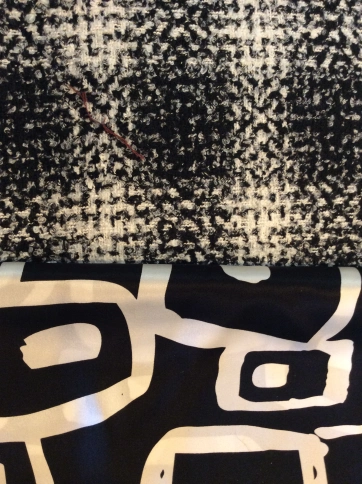
Fabric content: My first jacket was a wool blended with a number of other fibres, which is typical of a Chanel jacket. I see other fibres in future – mainly cotton or linen bouclés for summer jackets. I still want a winter-ish jacket, though, so will be happy enough with another wool blend.
Lines of Chanel jackets since 1954: I’m inspired by the myriad ways that the real Chanel jackets have reimagined Coco’s original 1954 design. Every season Chanel has models strutting down the catwalk wearing versions of the jacket or other types of garments where the jacket’s influence is subtle but no less present. So I look to these variations for the inspiration to know that there are many ways to make the same piece so very different. The truth is, though, that I really don’t want this piece to be that different from the original vision; nor do I really want it to be so different from the first one. What I want it to be is to incorporate all the lessons I learned from doing it the first time and maybe going a step beyond.
Colour combinations: I’m a neutral-loving kind of dresser. I’m especially interested in garments that are expensive – either in monetary terms or in this case in terms of time – to work with a lot of other clothes in my wardrobe. I’d still like to see this n a neutral colour, but I don’t want a black jacket. I’m seeing the Chanel jackets in light colours with dark trim. That’s the look I’ll go for.
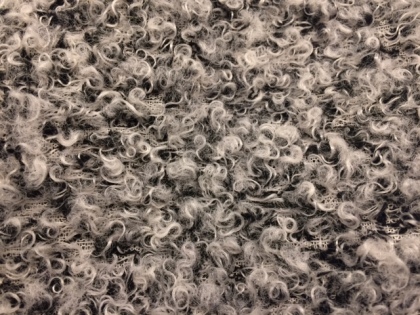

Trims: Oh, this is a good one. There is nothing better than going out to search for beautiful trims and being richly rewarded not only in finding just the perfect one that catches my imagination, but by finding a new store that sells all manner of wonderful trims. In the case of Mokuba which I discovered in the garment district in Toronto, this is really a hat-making store, but their trims are to die for – and they have so many it boggles the mind.
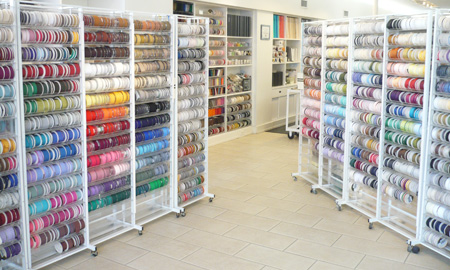
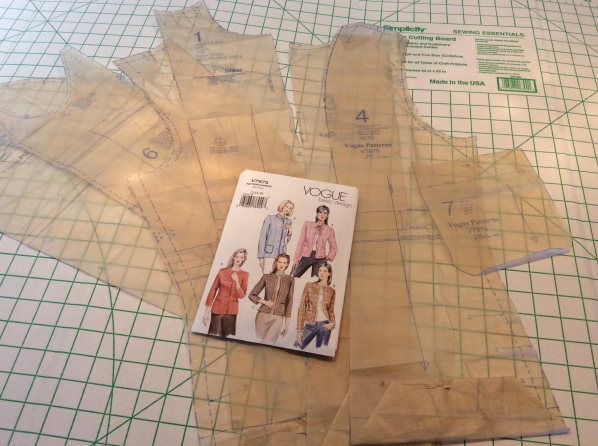
I was wondering throughout all this where Fashion designers look for inspiration. It seems almost everywhere (Yes, we all know they now use ‘street’ fashion as inspiration, but I’m never really sure how this works. Usually that cool, creative street style is inspired by designers, or fashion magazines or peers – so it seems like a circular process somehow.)
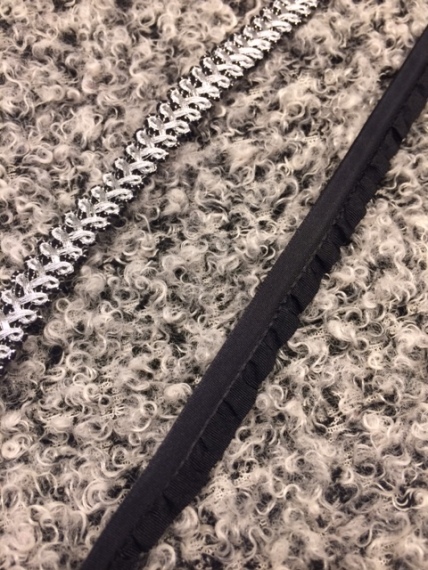
Anyway, it seems that some designers believe that “…vintage shops hold the key to design for many bona fide a fashion designer. “a print, a cut, an embroidered pattern…” http://www.independent.co.uk/life-style/fashion/features/fashions-undercover-experts-searching-for-inspiration-designers-send-spies-to-scour-vintage-a6732531.html
Other look to architecture. I love some of the photos in this web site. http://www.architecturaldigest.com/gallery/fashion-designers-architecture-inspiration
Others are inspired by travel – especially the cultural differences between us. http://www.travelandleisure.com/articles/travel-inspired-designers
So, I visited my favourite fabric store Affordable Fabrics and found that, true to their word earlier in the summer, they had a new selection of tweeds and bouclés in time for winter creations. I also like a print for a lining, but they didn’t have any printed silk charmeuse that day so I opted for a silky satin. I hope I’m not going to regret that it isn’t 100% silk, but it does look divine with the fabric.
I put these together with my trim choices, and I’m off to the races. See you when I get it going.




 In another life, I’m actually a writer. I’ve written magazine articles, corporate materials, online courses materials, blog pieces of various sorts and even a dozen or so books. Throughout my writing career I’ve always been obsessed with notebooks – and this obsession has spilled over into my sewing mania. I have a sewing notebook (or three) but have yet to figure out precisely the right one for me on an on-going basis. For me to be able to do this I need to do two things: first, I need to research what’s available and what other sewers use (for ideas), and second, I need to figure out exactly what I’ll use the notebooks (journals) for. Maybe I should start there.
In another life, I’m actually a writer. I’ve written magazine articles, corporate materials, online courses materials, blog pieces of various sorts and even a dozen or so books. Throughout my writing career I’ve always been obsessed with notebooks – and this obsession has spilled over into my sewing mania. I have a sewing notebook (or three) but have yet to figure out precisely the right one for me on an on-going basis. For me to be able to do this I need to do two things: first, I need to research what’s available and what other sewers use (for ideas), and second, I need to figure out exactly what I’ll use the notebooks (journals) for. Maybe I should start there.



 There has always been fast food – or so it seems. More recently we have slow food. But fast versus slow sewing? Evidently it’s a thing, too. I used to be firmly in the fast sewing lane. Always a deadline. Always feeling hemmed in by the hemming – by hand. Wow, have I ever changed my tune.
There has always been fast food – or so it seems. More recently we have slow food. But fast versus slow sewing? Evidently it’s a thing, too. I used to be firmly in the fast sewing lane. Always a deadline. Always feeling hemmed in by the hemming – by hand. Wow, have I ever changed my tune.




 A few years ago I stumbled on a book that I found so useful (and entertainingly written) that I bought it in hardcover and have actually read at least three times (something I almost never do). It even survived the great purge of 2014 when we sold our large property and moved to a downtown condo!
A few years ago I stumbled on a book that I found so useful (and entertainingly written) that I bought it in hardcover and have actually read at least three times (something I almost never do). It even survived the great purge of 2014 when we sold our large property and moved to a downtown condo!
 Along with learning to design, I’ve been playing around with various types of knit fabric since my reshaping suggests that these will continue to play a large part in my wardrobe life. To that end, I finished a tunic that I’d been eyeing in my pattern “stash” (I really hate that word – going to find a new one!), so when I found some lightweight knit I liked, I thought I’d embark on this “fast & easy” project. As anyone who has been reading along with my musings knows, I don’t seem to know how to do “fast & easy.” [
Along with learning to design, I’ve been playing around with various types of knit fabric since my reshaping suggests that these will continue to play a large part in my wardrobe life. To that end, I finished a tunic that I’d been eyeing in my pattern “stash” (I really hate that word – going to find a new one!), so when I found some lightweight knit I liked, I thought I’d embark on this “fast & easy” project. As anyone who has been reading along with my musings knows, I don’t seem to know how to do “fast & easy.” [







You must be logged in to post a comment.